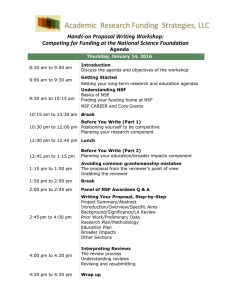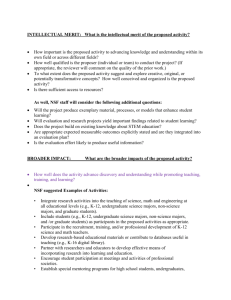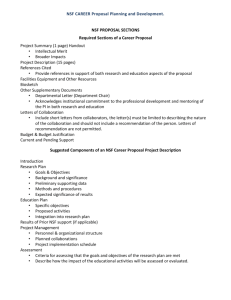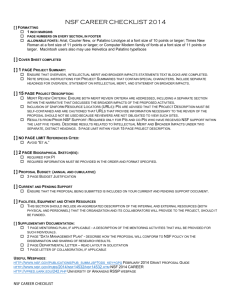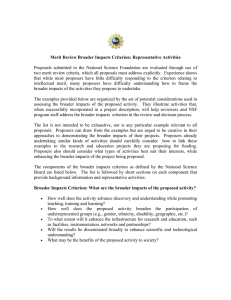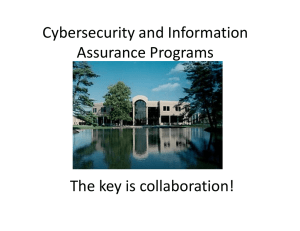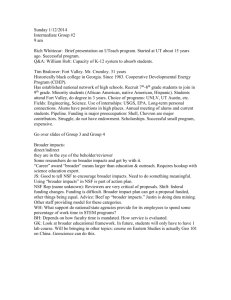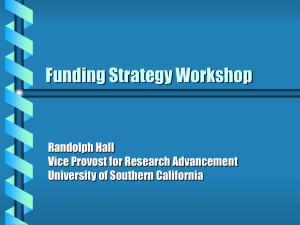NSF Broader Impacts Evaluation Plan (Hunter College)
advertisement
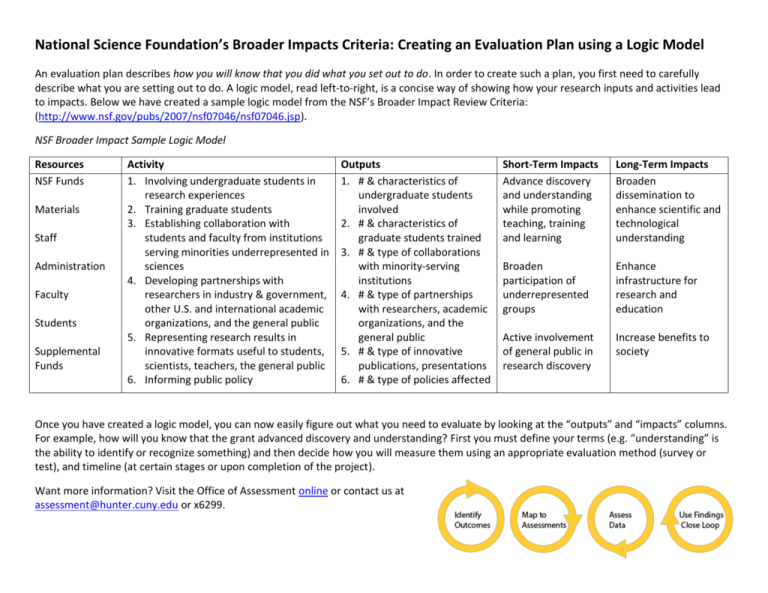
National Science Foundation’s Broader Impacts Criteria: Creating an Evaluation Plan using a Logic Model An evaluation plan describes how you will know that you did what you set out to do. In order to create such a plan, you first need to carefully describe what you are setting out to do. A logic model, read left-to-right, is a concise way of showing how your research inputs and activities lead to impacts. Below we have created a sample logic model from the NSF’s Broader Impact Review Criteria: (http://www.nsf.gov/pubs/2007/nsf07046/nsf07046.jsp). NSF Broader Impact Sample Logic Model Resources NSF Funds Materials Staff Administration Faculty Students Supplemental Funds Activity 1. Involving undergraduate students in research experiences 2. Training graduate students 3. Establishing collaboration with students and faculty from institutions serving minorities underrepresented in sciences 4. Developing partnerships with researchers in industry & government, other U.S. and international academic organizations, and the general public 5. Representing research results in innovative formats useful to students, scientists, teachers, the general public 6. Informing public policy Outputs 1. # & characteristics of undergraduate students involved 2. # & characteristics of graduate students trained 3. # & type of collaborations with minority-serving institutions 4. # & type of partnerships with researchers, academic organizations, and the general public 5. # & type of innovative publications, presentations 6. # & type of policies affected Short-Term Impacts Advance discovery and understanding while promoting teaching, training and learning Long-Term Impacts Broaden dissemination to enhance scientific and technological understanding Broaden participation of underrepresented groups Enhance infrastructure for research and education Active involvement of general public in research discovery Increase benefits to society Once you have created a logic model, you can now easily figure out what you need to evaluate by looking at the “outputs” and “impacts” columns. For example, how will you know that the grant advanced discovery and understanding? First you must define your terms (e.g. “understanding” is the ability to identify or recognize something) and then decide how you will measure them using an appropriate evaluation method (survey or test), and timeline (at certain stages or upon completion of the project). Want more information? Visit the Office of Assessment online or contact us at assessment@hunter.cuny.edu or x6299.
